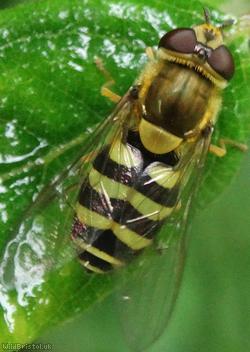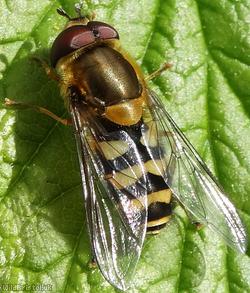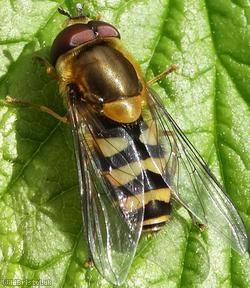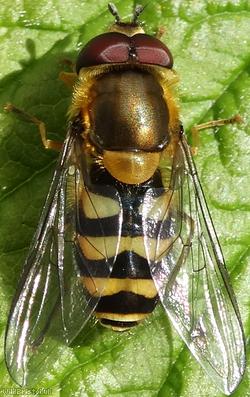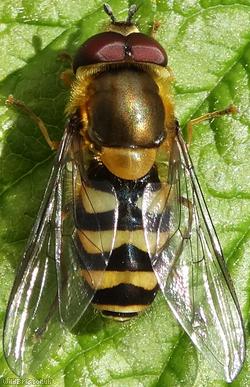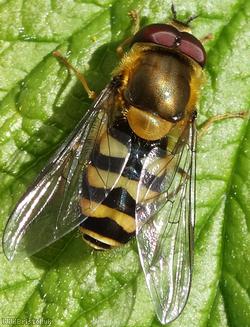Glass-winged Syrphus - Syrphus vitripennis
Favourite Photos
Species Description
Common and widespread throughout the UK. Habitat includes: Anywhere with a good supply of Aphids e.g. gardens, parks, allotments, churchyards, meadows, hedgerows, woodland rides, scrub, roadside verges etc. Flight period: March to November (mostly July to August - Peaks in May). Diet: Adults = Pollen / Nectar from a range of flowers, Larvae = a wide variety of Aphids. Other names include: Lesser Banded Hoverfly. ID: S. vitripennis is almost identical to S. ribesii both of which are bare-eyed. S. ribesii has the basal wing cells completely covered in microtrichia. However, rectus and vitripennis have zones of the 2nd basal cell free of tiny microtrichia. Males of ribesii tend to have the hind femora yellow for about the apical half or third as opposed to the apical quarter in vitripennis. Females S. ribessii have the hind femora entirely yellow (occasionally with a feint ring in the middle), which allows easy distinction from all other Syrphus, except S. rectus - a holarctic species that has been tentatively added to the British list but is poorly characterised.
